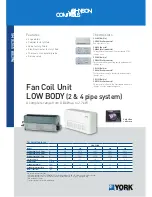
Solvent Considerations
103
C
•
Reproducible injection volumes for quantitation
•
Stable pump operation
This section presents information on the solubility of gases, solvent degassing methods,
and solvent degassing considerations.
C.7.1 Gas Solubility
Only a finite amount of gas can be dissolved in a given volume of liquid. This amount
depends on:
•
The chemical affinity of the gas for the liquid
•
The temperature of the liquid
•
The pressure applied to the liquid
Changes in the composition, temperature, or pressure of the mobile phase can lead to
outgassing.
Effects of Intermolecular Forces
Nonpolar gases (N
2
, O
2
, CO
2
, and He) are more soluble in nonpolar solvents than in polar
solvents. Generally, a gas is most soluble in a solvent whose intermolecular attractive
forces are similar to those in the gas (“like dissolves like”).
Effects of Temperature
Temperature affects the solubility of gases. If the heat of solution is exothermic, the
solubility of the gas decreases when you heat the solvent. If the heat of solution is
endothermic, the solubility increases when you heat the solvent. For example, the
solubility of He in H
2
O decreases with an increase in temperature, but the solubility of He
in benzene increases with an increase in temperature.
Effects of Partial Pressure
The mass of gas dissolved in a given volume of solvent is proportional to the partial
pressure of the gas in the vapor phase of the solvent. If you decrease the partial pressure
of the gas, the amount of that gas in solution also decreases.
C.7.2 Eluent Degassing Methods
You can degas eluents using any of the following methods:
•
Vacuum degassing
•
Inline degassing
•
Heating
•
Vacuum sonication
Summary of Contents for 1525EF
Page 6: ......









































